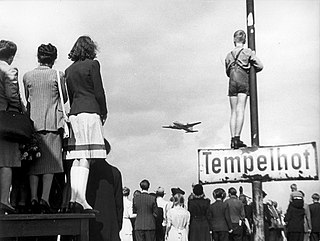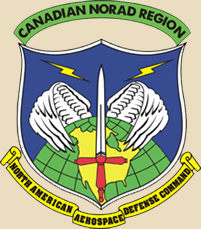Canadian Forces Station Cobourg (also CFS Cobourg) was a military logistics base located in Cobourg, Ontario.

Ontario is one of the 13 provinces and territories of Canada. Located in Central Canada, it is Canada's most populous province accounting for 38.3 percent of the country's population, and is the second-largest province in total area. Ontario is fourth-largest jurisdiction in total area when the territories of the Northwest Territories and Nunavut are included. It is home to the nation's capital city, Ottawa, and the nation's most populous city, Toronto, which is also Ontario's provincial capital.
The facility was created due to the expansion of Canadian military capability brought about by the Korean War and Cold War. Logistics and supply facilities for the Army were being expanded across Canada, and Cobourg was chosen as a site for a new supply depot. The choice of Cobourg for a location was partly due to its proximity to major rail lines. Land was purchased in 1951 and construction proceeded on several buildings over the next two years. In 1954, the headquarters of No. 26 Ordnance Depot of the Royal Canadian Ordnance Corps was relocated from Ottawa to Cobourg. The base existed mainly to provide supplies to other military facilities, but also included the Canadian Army's only respirator assembly plant and a detachment of No. 22 Works Company of the Royal Canadian Engineers.

The Korean War was a war between North Korea and South Korea. The war began on 25 June 1950 when North Korea invaded South Korea following a series of clashes along the border.

The Cold War was a period of geopolitical tension between the Soviet Union with its satellite states, and the United States with its allies after World War II. The historiography of the conflict began between 1946 and 1947. The Cold War began to de-escalate after the Revolutions of 1989. The collapse of the USSR in 1991 was the end of the Cold War. The term "cold" is used because there was no large-scale fighting directly between the two sides, but they each supported major regional conflicts known as proxy wars. The conflict split the temporary wartime alliance against Nazi Germany and its allies, leaving the USSR and the US as two superpowers with profound economic and political differences.

The Royal Canadian Ordnance Corps (RCOC) was an administrative corps of the Canadian Army. The Royal Canadian Ordnance Corps RCOC can trace its roots back to the Canadian Stores Department. Formed in 1871, the Canadian Stores Department was a civil department of the Canadian Government. This civil service was charged with control of forts, ammunition, stores, buildings and an ordnance depot left by the departing British Military.
When the three arms of the Canadian military were integrated to create the Canadian Forces, No. 26 COD became No. 26 Canadian Forces Supply Depot and the base was renamed Canadian Forces Base Cobourg (CFB Cobourg) in 1966. However, as Cobourg didn't house two or more major units, it didn't qualify as a "base" under Canadian Forces' criteria and was renamed Canadian Forces Station Cobourg a short time later.
In 1969, the Canadian Forces supply system was reorganized and CFS Cobourg was identified as surplus. The supply duties of the base were assumed by depots at CFB Downsview in the Toronto area and at the Longue Point site of CFB Montreal; the station was closed and decommissioned on August 31, 1970.

Toronto is the provincial capital of Ontario and the most populous city in Canada, with a population of 2,731,571 in 2016. Current to 2016, the Toronto census metropolitan area (CMA), of which the majority is within the Greater Toronto Area (GTA), held a population of 5,928,040, making it Canada's most populous CMA. The city is the anchor of the Golden Horseshoe, an urban agglomeration of 9,245,438 people surrounding the western end of Lake Ontario. Toronto is an international centre of business, finance, arts, and culture, and is recognized as one of the most multicultural and cosmopolitan cities in the world.
The depot was sold to the government of Ontario, which converted it to an industrial park, and later sold it to the Town of Cobourg.

Canadian Forces Base Borden, formerly RCAF Station Borden, is a Canadian Forces base located in Ontario.

Canadian Forces Base Kingston is a Canadian Forces Base operated by the Canadian Army located in Kingston, Ontario.

A Canadian Forces Base or CFB is a military installation of the Canadian Armed Forces. For a facility to qualify as a Canadian Forces base, it must station one or more major units.

Canadian Forces Base (CFB) Halifax is Canada's east coast naval base and home port to the Royal Canadian Navy Atlantic fleet, known as Canadian Fleet Atlantic (CANFLTLANT), that forms part of the formation Maritime Forces Atlantic (MARLANT).

Vanastra is a community in the municipality of Huron East, Ontario in Huron County, three kilometres south of the community of Clinton. It is located on the former property of a top secret Royal Canadian Air Force (RCAF) station used to train and supply over 7,000 radar technicians and support staff for American, British and Canadian forces during World War II.
Canadian Forces Base Clinton, CFB Clinton for short, was a Canadian Forces Base located near Clinton, Ontario. It initially opened in July 1941 as RAF Station Clinton under the British Commonwealth Air Training Plan as a training unit for radar operators during a period when radar was a top secret device. UK, Canadian, US and other servicemen were trained at Clinton, with practical flights being carried out at nearby RCAF Station Centralia. Clinton remained the primary radar training site for Canadian Forces personnel through the Cold War era, with continued expansions throughout the 1950s and 60s. As part of a centralization effort, CFB Clinton was closed in 1971, with the site abandoned by 1972. A number of buildings remain on the site, including a large "golf ball" radome.

Canadian Forces Station Leitrim, also referred to as CFS Leitrim, is a Canadian Forces Station located in the neighbourhood of Leitrim in Ottawa, Ontario. It is concerned with the interception, decrypting and processing of communication for the Communications Security Establishment and the Canadian Forces, and forms part of the ECHELON system.

Canadian Forces Base Gander, is a Canadian Forces base located in Gander, Newfoundland and Labrador. It is operated as an air force base by the Royal Canadian Air Force and is home to air/marine search and rescue operations that cover a vast swath of the western North Atlantic and southern Arctic. Its primary RCAF lodger unit is 9 Wing, commonly referred to as 9 Wing Gander.
Canadian Forces Detachment Dundurn is a Canadian Forces facility located near the town of Dundurn, Saskatchewan and approximately 40 km south of Saskatoon, Saskatchewan.

Canadian Forces Base Winnipeg, is a Royal Canadian Air Force base located within the City of Winnipeg, Manitoba. Co-located at the Winnipeg James Armstrong Richardson International Airport, CFB Winnipeg is home to many flight operations support divisions, as well as several training schools. Its primary RCAF lodger unit is 17 Wing, commonly referred to as 17 Wing Winnipeg.
Canadian Forces Base London is a former Canadian Forces Base that was located in London, Ontario, Canada. It was downsized and closed during defence budget cutbacks in the 1990s. Local Primary Reserve units were supported by Area Support Unit (ASU) London which was located in some of the remaining base buildings, but they are now supported by ASU Toronto. Much of this support is delivered by a Technical Services Platoon which remains stationed in London.

Canadian Forces Base Picton was a military installation located in Picton, Ontario. The base was active from the Second World War to 1969 and served the Royal Air Force, Royal Canadian Air Force and Canadian Army. Today, the site functions as the Picton Airport.

Canadian Forces Station Falconbridge was a military radar station in the Canadian province of Ontario, active from 1952 to 1985.
Canadian Forces Station Mill Cove is a former Canadian Forces Station and currently a naval radio station located near Hubbards, Nova Scotia. Built in 1967, it is remotely operated by the Canadian Forces from CFB Halifax.
Canadian Forces Station Val d'Or was a Canadian Forces Station in Val-d'Or, Quebec.

Canadian Forces Station Bermuda, commonly shortened to CFS Bermuda and popularly known as Daniel's Head, was a Canadian Forces Station in Bermuda that was operational from 1963 until 1992. A previous base, HMCS Somers Isles had existed during the Second World War.
Canadian Forces Base Moncton or CFB Moncton is a former Canadian Forces Base located in Moncton, New Brunswick.
Canadian Forces Station Shelburne, also known as CFS Shelburne, is a former Canadian Forces Station located in Shelburne County, Nova Scotia.

Canadian Forces Station Ramore is a closed General Surveillance Radar station. It is located 4 miles (6.4 km) east of Ramore, Ontario. It was closed in 1974. It was operated as part of the Pinetree Line network controlled by NORAD. It has since been sold and is now private property.













